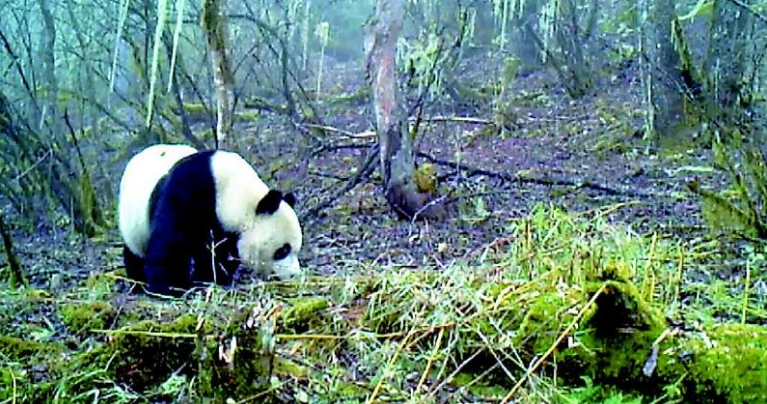Baishuijiang Nature Reserve is a forest and wildlife nature reserve, located on the nortliem slopes of the Min Moutains in southernmost Gansu Province. The southern edge of the reserve connects it to neighboring Tangjia River Nature Reserve. To its north, it connects with the Copper River Basin in the western part of the Qinling Mountains. The entire reserve covers about 183,799 hectares, with a core area of 90,158 hectares, and a buffer area of 26,132 hectares. There is also an experimental zone of 67,509 hectares.
Baishuijiang Nature Reserve was established in 1978. Baishuijiang Nature Reserve is one of three giant panda reserves, directly under the State Forestry Administration. Its southeastern terrain is lower than its northwestern areas, with most of its territory between 1,500 to 3,100m.
The highest point of reserve is 4,072m, the lowest is 595m. Most of the reserve’s waterways lay between 1,000 – 2,500m in elevation.
The weather is a transition from north subtropical climate to warm temperate, vertical change clearly. The differences in elevation create six vertical distribution areas for species to live in. The reserve has the largest concentration of rare and endangered species of flora and fauna in Gansu province. There are 5,130 distinct species on record in the reserve:294 macrofungi, 23 mosses, 185 ferns, 1,810 seed plants, 195 spiders, 2,138 insects, 68 fishes, 28 amphibians, 37 reptiles, 275 birds, and 77 mammals.
Landscape in reserve is abundant diversity, like bare rock, alpine meadows, forest, farmland, rivers, lakes, mountains, ponds, in which forest accounted main break position. Plant communities constitute a diverse, it could be divided into 4 Vegetation Type Groups, 10 Vegetation Types, 14 Vegetation Sub-Types, 43 Formations.
Seed plant flora collect three floral element like China-Japan forest flora, China-Himalaya forest flora and the Qinghai-Tibet Plateau flora. With the feather of obvious temperate nature, ancient origin, complexity geographical elements and more rare and endangered plants.
Zoogeographical region is located in the collective region of the Palaearctic North China Region and Tibetan area and Oriental region’s South China region. Characterized by dominant Oriental species, complex geographical elements, obvious transitivity, and various kinds of ancient and Relict species.
Giant panda’s food bamboo in Baishuijiang Nature Reserve is rich. Kinds of Fargesia covers about 60,800 mu in total. 1 Genus and 5 species for giant pandas to eat. According to the 3rd National Giant Panda Census, there are 103 giant pandas in it.
It is good place for tourist resorts, scientific investigation and exploring because of pleasant climate, exotic landscapes, a wide variety of rare animal and plants, beauty natural landscape and historical monuments and unique ethnic customs.
Baishuijiang Nature Reserve was seriously influenced in the earthquake 12, May 2008. Six days after the earthquake, two groups from reserve went into forest at the first moment. They had made a follow-up survey on the wild giant panda and other rare animals. They didn’t find a panda dead or injured.
In May, 2010, two years after the Wenchuan Earthquake, reserve authority spend more than 20 days on investigating wildly 106 routes of giant panda. Finally, they discovered 83 traces of giant panda. Among them, there are 66 panda feces, 10 feeding sites, 5 dens and 2 paw prints. The survey showed that giant panda lived well in Baishuijiang Nature Reserve.
Recently the 4 National Giant Panda Census is going on. People will get more information about giant Panda’s life in Baishuijiang Nature Reserve in the future.
















